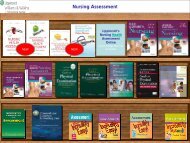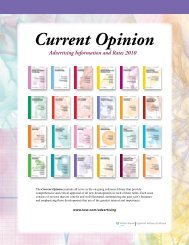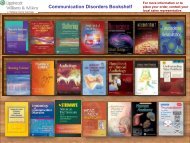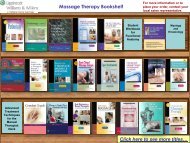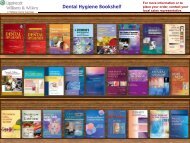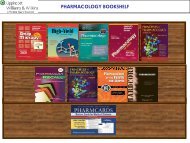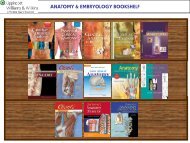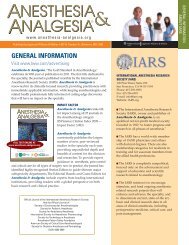Nurse Assisting (CNA)
Nurse Assisting (CNA)
Nurse Assisting (CNA)
You also want an ePaper? Increase the reach of your titles
YUMPU automatically turns print PDFs into web optimized ePapers that Google loves.
Lippincott's Textbook for Personal Support Workers:<br />
A Humanistic Approach to Caregiving<br />
Marilyn McGreer, BSc, LPN & Pamela J. Carter, RN, BSN, Med, CNOR<br />
November 2010/ 944 pp./ 805 illus./ 978-1-60831-170-5<br />
Student Resources on<br />
DVD and thePoint:<br />
• Watch & Learn Video Clips<br />
• "Personal Support Workers<br />
Make a Difference!" Stories<br />
• Instructor's Resource DVD<br />
• Test Generator<br />
• PowerPoint Presentations<br />
• Guided Lecture Notes<br />
• Image Bank<br />
• Pre-Lecture Quizzes and<br />
Answers<br />
• Discussion Topics and<br />
Answers<br />
• Case Studies and Answers<br />
• Stop and Think Scenario<br />
Discussion Points<br />
• Answers to For-Sale<br />
Workbook<br />
• Syllabus<br />
Features:<br />
Click here to access thePoint<br />
• NEW! Information on populations indigenous to Canada.<br />
• NEW! Specific information on Canadian healthcare system.<br />
• NEW! Units of measure changed to reflect Canadian standards.<br />
• What Will You Learn Each chapter begins with a What Will You Learn section, which<br />
previews the chapter and helps to focus the student's reading. Each What Will You Learn<br />
section begins with a paragraph that introduces the topic of the chapter to the introductory<br />
paragraph is then followed by a list of learning objectives and vocabulary words.<br />
• What Did You Learn Multiple-choice and matching exercises at the end of each chapter<br />
provide students with the opportunity to evaluate their understanding of the material they<br />
have just studied. Answers to these exercises are given in Appendix A.<br />
• Highlighted figure, table, and box call-outs. The references to figures, tables, and boxes are<br />
highlighted with color in the narrative, helping students to quickly find their place in the text<br />
after stopping to look at a figure, table, or box.<br />
• Procedures. Procedures present step-by-step instructions for key personal support worker<br />
actions.<br />
• Guidelines Boxes. These boxes summarize general guidelines for various aspects of the<br />
personal support workers job. The unique "What You Do/Why You Do It" format helps students<br />
to understand why things are done a certain way. Rather than just presenting students with<br />
an endless list of guidelines to memorize, these boxes help them to remember why these<br />
guidelines are important to follow.<br />
• Tell the <strong>Nurse</strong>! Notes. This feature highlights the signs and symptoms a personal support worke<br />
may observe that are significant and need to be reported to the nurse immediately.<br />
• Stop and Think! Scenarios. These scenarios at the end of each chapter present situations to<br />
promote critical thinking.<br />
• Helping Hands and a Caring Heart: Focus on Humanistic Health Care Boxes. These boxes,<br />
found throughout the text, encourage students to empathize with those in their care, and<br />
emphasize the importance of meeting patients' and residents' emotional and spiritual needs<br />
as well as their physical needs.



